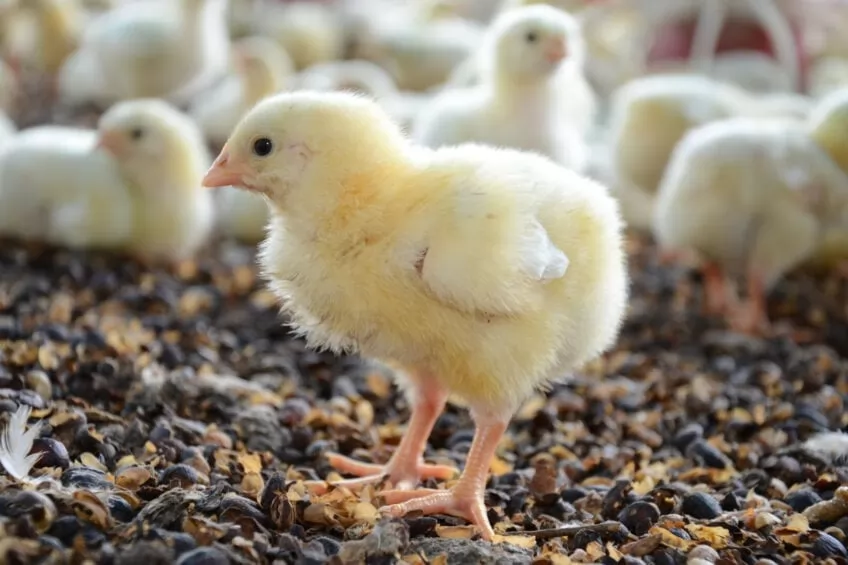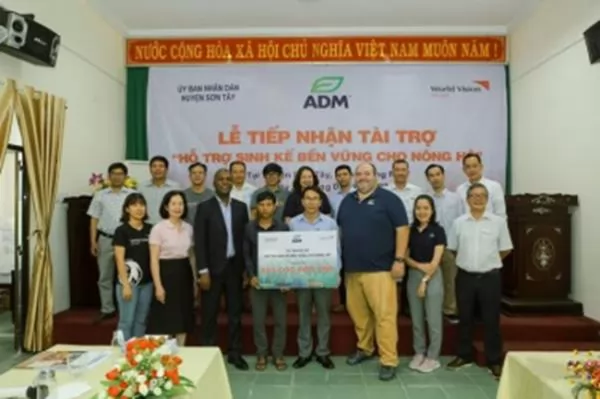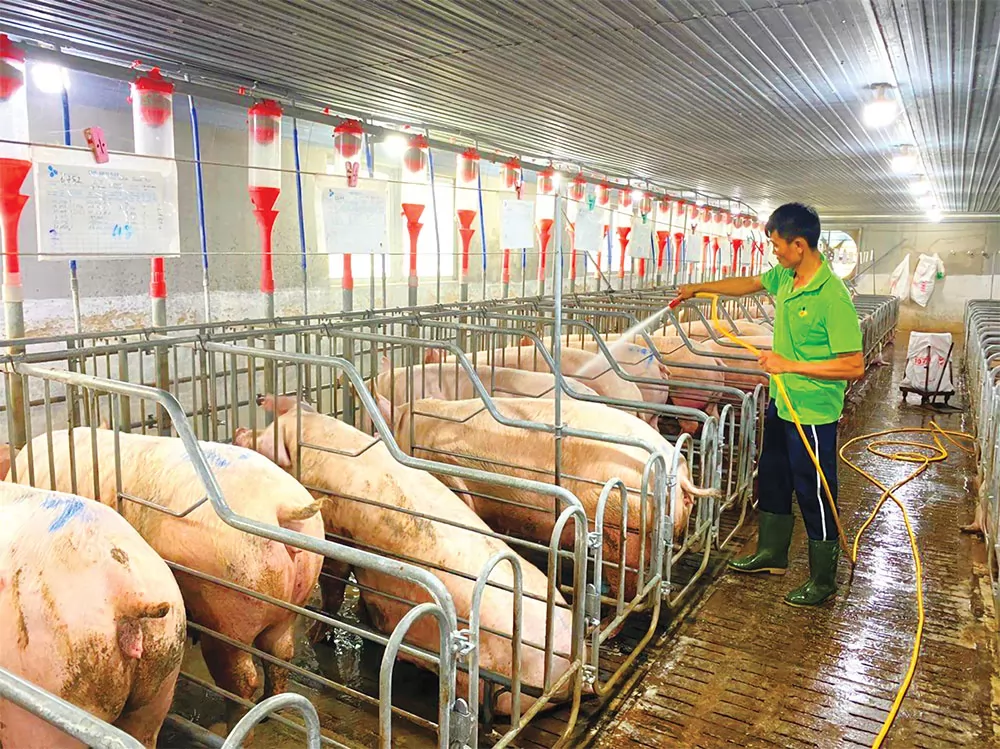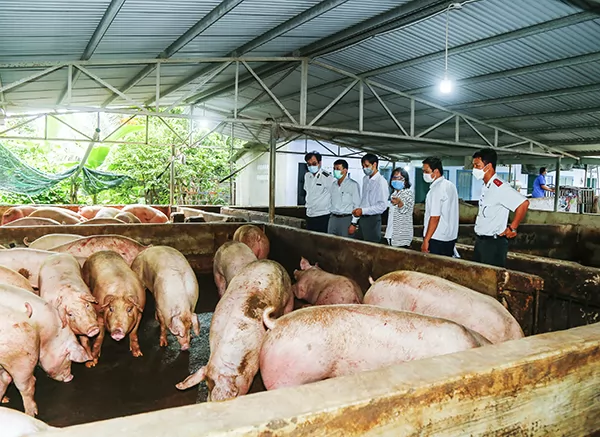Upholding vaccination standards for day-old chicks in the hatchery

Vaccinating day-old birds ensures early protection and long-lasting immunity, thereby providing disease protection throughout the entire poultry production cycle. Photo: Ceva Animal Health.
(VAN) Infectious bronchitis (IB) and infectious bursal disease (IBD) are highly contagious poultry diseases reported worldwide, with new variants and strains emerging each year.
To protect chicks against both diseases, hatchery vaccination is considered the best solution. However, vaccinating thousands of chicks per hour by subcutaneous and spray routes without missing any remains a significant challenge.
Vaccination of day-old chicks
Vaccinating day-old birds ensures early protection and long-lasting immunity, thereby providing disease protection throughout the entire poultry production cycle. Commonly realised at the hatchery to reduce the risk of vaccination failure regularly encountered in the field, the vaccination process remains a challenge in many aspects. The very first steps are vaccine storage and preparation and should be carried out under aseptic conditions by specialised operators trained to follow the good vaccination practices. This to ensure vaccine integrity and therefore efficacy.
A poultry vaccination program can only be considered successful if all vaccinations are effectively administered. A comprehensive poultry health program typically includes multiple vaccines targeting different diseases to provide broad protection. This is essential because various field viruses, along with their new strains and variants, emerge regularly and spread rapidly, requiring ongoing vigilance and coverage.
Routes of administration
Poultry vaccines, offered by manufacturers in various forms such as frozen or lyophilized (freeze-dried), require different routes of administration depending on the vaccine type. These can be divided into 2 categories: injection or spray.
For the injection, 2 options are possibles: subcutaneous injection of day-old chicks, or in-ovo vaccination. For spray, 2 options are also possible: spray for respiratory diseases and gel for coccidiosis vaccination.
The choice of vaccination route depends on the hatchery’s size and level of automation, as well as the type of vaccine being administered. Similarly, the equipment used in the hatchery will vary accordingly. Fully automated hatcheries typically use in-line automated sprayers and can vaccinate chicks either in-ovo or subcutaneously using multiple injection devices integrated into conveyor systems or carousels. In contrast, other hatcheries might rely on cabinet sprayers, which require operators to manually position chick crates under the nozzles. However, the most advanced cabinet systems feature alert mechanisms that reduce operator dependency and help ensure consistent vaccination quality.
Infectious bursal disease: subcutaneous injection
Using a new technology and a new formulation, the latest infectious bursal disease immune-complex vaccine is stored frozen in liquid nitrogen. Once thawed, the vaccine ampoules are mixed with a diluent bag to prepare the vaccine solution and then administrated to the birds using in-ovo vaccination or via stand-alone injection machines (Figure 2) at an average subcutaneous vaccination speed of 2,500 chicks/hour.
Reliability of dosage and robustness are key features of these machines, which operate in the challenging hatchery environment characterized by high humidity and fluff, and are cleaned daily. Operators’ safety is another concern and should be taken into consideration.
Infectious bronchitis: spray vaccination
For the infectious bronchitis respiratory vaccine, live-attenuated vaccine vials contain the live virus in a lyophilized (freeze-dried) powder form. This powder is mixed with a diluent – typically distilled water – to prepare the final vaccine solution ready for administration. The volume of water needed is calculated according to the vaccine doses, the number of day-old chicks per crate as well as the volume sprayed by the machine.
Usually, between 10 mL and 14 mL of vaccine is sprayed per chick box, using 2 to 4 flat nozzles in the more innovative machines to deliver a high-quality spray pattern. Cabinet machines operate at a maximum speed of 50,000 chicks per hour, while in-line sprayers—which run continuously—can vaccinate at twice that speed.
2 vaccinations combined in 1 line
Every chick counts, and hatchery productivity tends to increase over time. However, it is challenging to ensure that each chick receives an accurate dosage of multiple vaccines necessary to develop the expected protective immune response. This is a major concern of Ceva Animal Health, dedicated to hatchery integrated solutions to secure the poultry industry and its sustainability by protecting the birds against diseases.
Ordinarily, vaccination is done in two steps: first, subcutaneous IBD vaccination is performed on several chick boxes; then, spray IB vaccination is applied to all these boxes in another corner of the same room, or vice versa. The Dovac High Speed Line offers an innovative one-way system that vaccinates chicks against both IBD and IB in a single pass.
Optimising the vaccination of day-old chicks in the hatchery involves combining subcutaneous and spray vaccination methods. This approach reduces labor and minimises the risk of missing any vaccinations, which could otherwise compromise the success of the entire vaccination programme and potentially lead to infectious bronchitis or infectious bursal disease outbreaks later at the farm level.
The Dovac High Speed Line workflow optimisation increases vaccination process speed by 25% while saving up to 20% in human resources, a key consideration given the very high hatchery turnover in recent years.
This vaccination process improvement is the result of years of field observations in hatcheries, aimed at supporting better vaccine administration and efficacy. To date, it is still mainly applied through table-like systems.
First installation in 2023
In 2023, one of the first installations of the Dovac High Speed Line was completed at a major poultry integrator in the Philippines. Welcomed by the company’s hatchery team, it quickly demonstrated its added value and led to the installation of a second unit in another hatchery within the company.
This process highlights that poultry hatchery vaccination should be approached holistically, from vaccine storage and preparation to administration using automated or semi-automated hatchery machines. It involves multiple steps in a complex workflow that integrates various vaccines and different administration routes, all while involving human operators and live birds.
An integrated solution for vaccination success
That’s why, more than ever, successful hatchery vaccination requires integrated solutions provided by hatchery experts. These solutions support continuous improvement through innovative vaccines and best-in-class service, including regular field visits, disease awareness, and vaccine efficacy monitoring. Operator training and the integration of new knowledge and technologies are also essential. After all, every chick counts.
The goal is always to achieve 100% of chicks properly vaccinated at all times, supported by local expertise, data analysis, and optimized processes—regardless of the vaccine administration route, hatchery size, level of automation, or location.
H.D
(Poultryworld)
Maybe you are interested

ADM and World Vision Vietnam supported the supply of breeding chickens for farmers
Recently, Archer Daniels Midland Company (ADM) and World Vision Vietnam co-funded a project of supporting sustainable livelihoods for farmers...

Pig-breeding restructuring underway in Vietnam
Swine breeding businesses are glad of the rise in pig selling prices, after a 2023 so far with financial results in the doldrums.

Developing breeding sustainably
At a recent meeting with Khanh Hoa Provincial People's Committee, Deputy Minister of Agriculture and Rural Development Phung Duc Tien assessed that breeding in Khanh Hoa...





